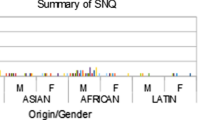Abstract
This paper is devoted to the problem of self-control of autonomous robot in a complex, unknown environment. In such an environment it is impossible to predict all situations the robot could be faced with. Because of this it is necessary to equip the robot with control procedures that allow it to avoid dangerous scenarios. Mechanisms that serve to avoid threatening events have been worked out during evolution and living organisms are equipped with them. Conditioned anxiety is one of such mechanisms. In this paper the way in which this mechanism can be adapted to control of behaviour of autonomous robot, is presented. The effectiveness of the proposed approach has been verified by using V-REP simulator.
Access this chapter
Tax calculation will be finalised at checkout
Purchases are for personal use only
Similar content being viewed by others
Notes
References
Arbib, M.A., Fellous, J.M.: Emotions: from brain to robot. Trends Cogn. Sci. 8, 554–561 (2004)
Bajracharya, M., Maimone, M.W., Helmick, D.: Autonomy for Mars rovers: past, present, and future. Computer 41(12), 44–50 (2008)
Bielecki, A.: A model of human activity automatization as a basis of artificial intelligence systems. IEEE Trans. Auton. Mental Dev. 6, 169–182 (2014)
Bielecki, A.: A general entity of life - a cybernetic approach. Biol. Cybern. 109, 401–419 (2015)
Bielecki, A., Buratowski, T., Ciszewski, M., Śmigielski, P.: Vision based techniques of 3D obstacle reconfiguration for the outdoor drilling mobile robot. In: Rutkowski, L., Korytkowski, M., Scherer, R., Tadeusiewicz, R., Zadeh, L.A., Zurada, J.M. (eds.) ICAISC 2016. LNCS, vol. 9693, pp. 602–612. Springer, Cham (2016). doi:10.1007/978-3-319-39384-1_53
Bielecki, A., Buratowski, T., Śmigielski, P.: Syntactic algorithm of two-dimensional scene analysis for unmanned flying vehicles. In: Bolc, L., Tadeusiewicz, R., Chmielewski, L.J., Wojciechowski, K. (eds.) ICCVG 2012. LNCS, vol. 7594, pp. 304–312. Springer, Heidelberg (2012). doi:10.1007/978-3-642-33564-8_37
Bielecki, A., Buratowski, T., Śmigielski, P.: Recognition of two-dimensional representation of urban environment for autonomous flying agents. Expert Syst. Appl. 40, 3623–3633 (2013)
Bielecki, A., Buratowski, T., Śmigielski, P.: Three-dimensional urban-type scene representation in vision system of unmanned flying vehicles. In: Rutkowski, L., Korytkowski, M., Scherer, R., Tadeusiewicz, R., Zadeh, L.A., Zurada, J.M. (eds.) ICAISC 2014. LNCS, vol. 8467, pp. 662–671. Springer, Cham (2014). doi:10.1007/978-3-319-07173-2_56
Bielecki, A., Śmigielski, P.: Graph representation for two-dimensional scene understanding by the cognitive vision module. Int. J. Adv. Robot. Syst. 14(1), 1–14 (2017)
Camurri, A., Coglio, A.: An architecture for emotional agents. IEEE Multimedia 5(4), 24–33 (1998)
Ferber, J.: Multi-Agent System: An Introduction to Distributed Artificial Intelligence. Addison Wesley Longman, Harlow (1999)
Flasiński, M.: Introduction to Artificial Intellignce. Springer International Publishing, Switzerland (2016)
Ganella, D.E., Kim, J.H.: Developmental rodent models of fear and anxiety: from neurobiology to pharmacology. Br. J. Pharmacol. 171, 4556–4574 (2014)
Gat, E., Desai, R., Ivlev, R., Loch, J., Miller, D.P.: Behavior control for robotic exploration of planetary surfaces. IEEE Trans. Robot. Autom. 10, 490–503 (1994)
Grotzinger, J.P., et al.: Mars science laboratory mission and science investigation. Space Sci. Rev. 170, 5–56 (2012)
Kȩpiński, A.: Anxiety. PZWL (1972) (in Polish)
LeDoux, J.: The Emotional Brain. Simon and Schuster, New York (1996)
Lindemann, R.A., Bickler, D.B., Harrington, B.D.: Mars exploration rover mobility development. IEEE Robot. Autom. Mag. 13(2), 19–26 (2006)
Maren, S.: Neurobiology of Pavlovian fear conditioning. Ann. Rev. Neurosci. 24, 897–931 (2001)
Mazur, M.: Cybernetic Theory of Autonomous Systems. PWN, Warszawa (1966) (in Polish)
Mazur, M.: Cybernetics and Character. PIW, Warszawa (1976) (in Polish)
Maria, K.A., Zitar, M.A.: Emotional agents: a modeling and an application. Inf. Softw. Technol. 49, 695–716 (2007)
Nesse, R.M.: Proximate and evolutionary studies of anxiety, stress and depression: synergy at the interface. Neurosci. Behav. Rev. 23, 895–903 (1999)
Scheier C., Pfeifer R.: The embodied cognitive science approach. In: Tschacher, W., Dauwalde, J.P. (eds.) Dynamics Synergies Autonomous Agents. Studies in Nonlinear Phenomena in Life Science, vol. 8, pp. 159–179 (1999)
Tadeusiewicz, R.: Vision Systems of Industrial Robots. WNT, Warszawa (1992) (in Polish)
Tadeusiewicz, R.: Neural Networks. Akademicka Oficyna Wydawnicza, Warszawa (1993) (in Polish)
Tadeusiewicz, R.: Problems of Biocybernetics. PWN, Warszawa (1994) (in Polish)
Tadeusiewicz, R.: New trends in neurocybernetics. Comput. Methods Mater. Sci. 10, 1–7 (2010)
Tadeusiewicz, R.: Place and role of intelligent systems in computer science. Comput. Methods Mater. Sci. 10, 193–206 (2010)
Tadeusiewicz, R. (ed.) Theoretical Neurocybernetics. WUW, Warszawa (2009) (in Polish)
Tadeusiewicz, R., Chaki, R., Chaki, N.: Exploring Neural Networks with C. CRC Press, Boca Raton (2015)
Velásquez, J.D.: When robots weep: emotional memories and decision-making. In: Proceedings of the 15th National Conference on Artificial Intelligence, AAAI-98, pp. 70–75 (1998)
Volpe, R., Balaram, J., Ohm, T., Ivlev, R.: Rocky 7: a next generation Mars rover prototype. Adv. Robot. 11, 341–358 (1997)
Wiener, N.: Cybernetics or Control and Communication in the Animal and the Machine. MIT Press, Cambridge (1947)
Żurada, J.M.: Introduction to Artificial Neural Systems. West Publishing Company, St. Paul (1992)
Author information
Authors and Affiliations
Corresponding author
Editor information
Editors and Affiliations
Rights and permissions
Copyright information
© 2017 Springer International Publishing AG
About this paper
Cite this paper
Bielecki, A., Bielecka, M., Bielecki, P. (2017). Conditioned Anxiety Mechanism as a Basis for a Procedure of Control Module of an Autonomous Robot. In: Rutkowski, L., Korytkowski, M., Scherer, R., Tadeusiewicz, R., Zadeh, L., Zurada, J. (eds) Artificial Intelligence and Soft Computing. ICAISC 2017. Lecture Notes in Computer Science(), vol 10246. Springer, Cham. https://doi.org/10.1007/978-3-319-59060-8_35
Download citation
DOI: https://doi.org/10.1007/978-3-319-59060-8_35
Published:
Publisher Name: Springer, Cham
Print ISBN: 978-3-319-59059-2
Online ISBN: 978-3-319-59060-8
eBook Packages: Computer ScienceComputer Science (R0)




